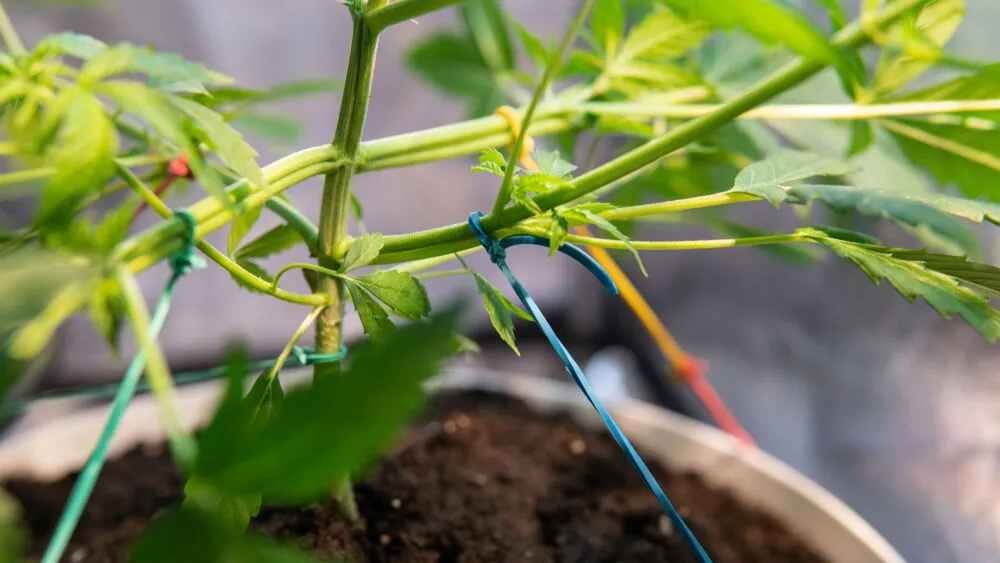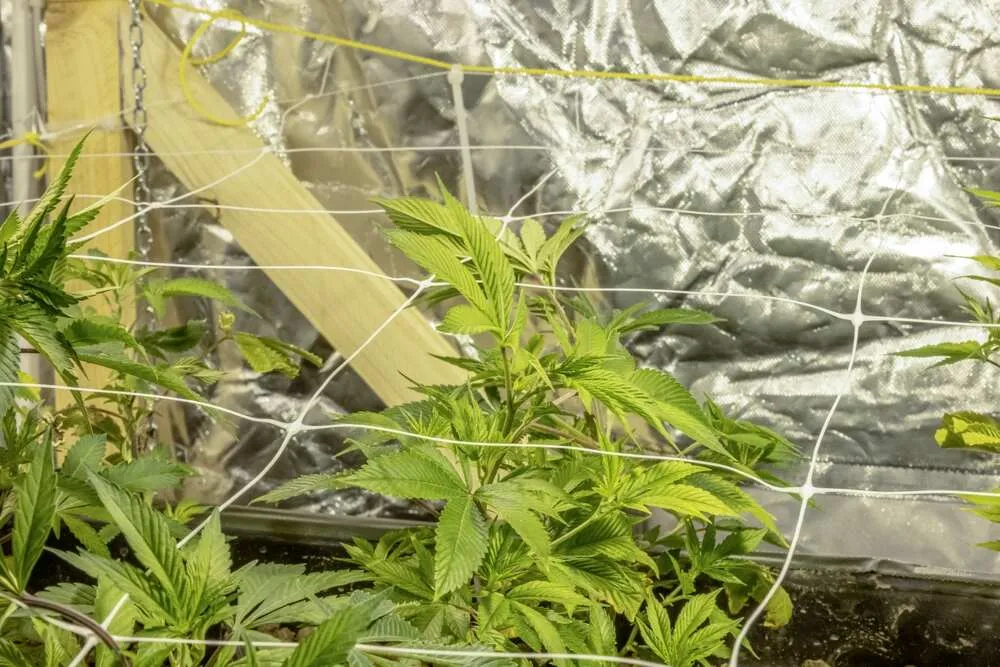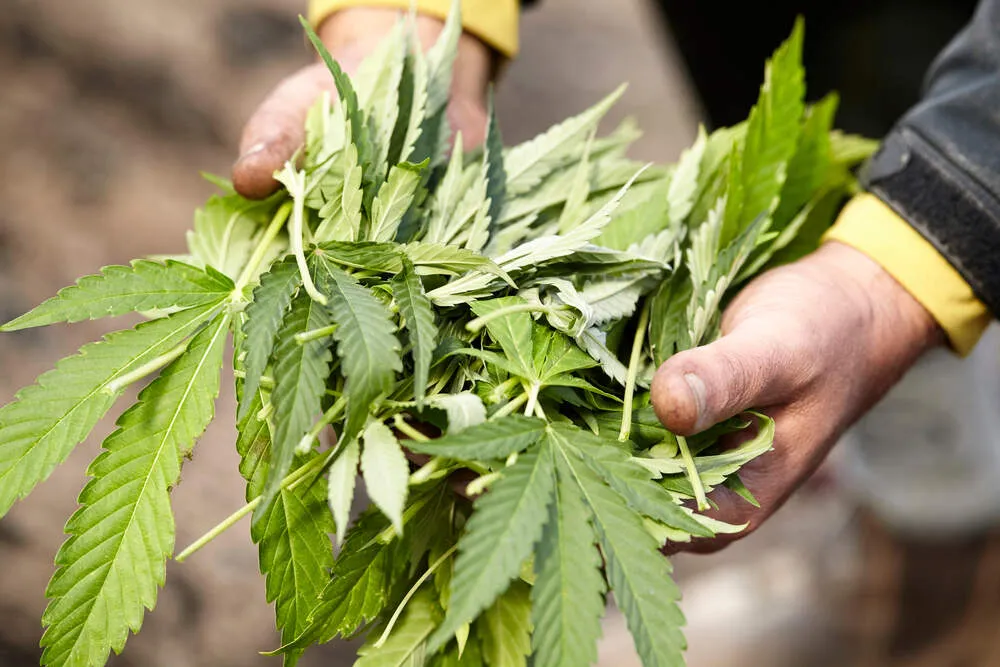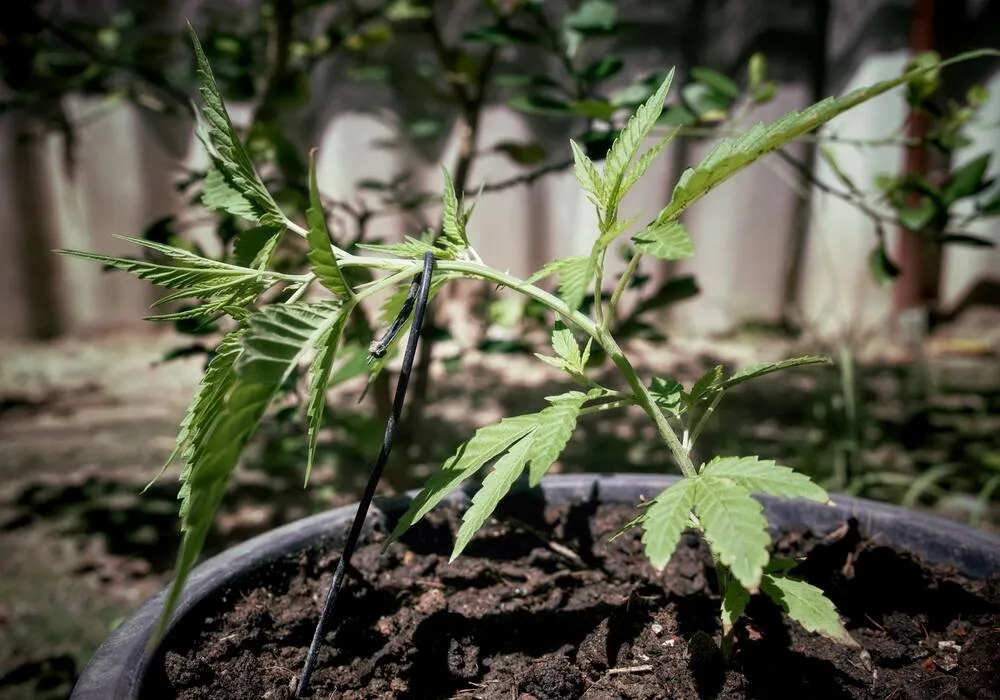Training autoflowering cannabis plants is one of the easiest and most efficient ways to get the most out of your indoor grow space, as well as promote large sized yields. Tying your autoflowers down, defoliation and using a screen at the right stage can make a huge difference in the plant’s shape, structure, and number of colas you can produce.
In this article, I explain all you need to know about the low stress technique, the different types of LST training, how to prepare for L.S.T, a step-by-step guide, and common mistakes to avoid. So, get ready to learn just how simple and highly effective L.S.T can be and why you should start practicing this game changing technique on your autoflowering cannabis plants.
- How to LST Train Your Autoflower
- What is Low Stress Training (LST) and Why Use It?
- Benefits of low stress training vs high stress training on autoflowers
- The different ways of LST training
- Preparation for LST training
- Step-by-Step Guide to LST Training Your Autoflower
- Common Mistakes and Troubleshooting LST
- Combining LST with Other Training Techniques (e.g., Topping, Super Cropping)
How to LST Train Your Autoflower
If you are asking yourself, how do I L.S.T my autos? Well, all you need is a healthy plant that is growing between week 3-4, basic equipment such as gardening wire for tying down, a sharp pair of scissors for defoliating and removing fan leaves, or a screen that can be made from chicken wire or pea netting. Combined with recovery time and plenty of patience, you will become a master of L.S.T.
What is Low Stress Training (LST) and Why Use It?
Low stress training refers to cannabis plant training techniques that produce minimal amounts of stress, whilst providing a great number of benefits. When compared to high stress techniques such as topping and super cropping, L.S.T allows your autoflowering plants to easily recover and manipulate the plant’s final growth structure. This improves air flow and changes the current shape, including overall yield potential. L.S.T will allow you to get the most out of your grow space and it is well recommended to home growers with limited height.
Benefits of low stress training vs high stress training on autoflowers
- Low stress training is ideal for first-time growers and is straightforward to do
- You do not need to spend much money and it can be done on a small budget.
- Autoflowering plants can quickly recover from L.S.T and grow with optimal potential.
- Topping and super cropping autos can have negative effects if the timing is not correct.
- Not all autoflowering varieties will react well to high stress training, making L.S.T best.
- Defoliation will improve air flow around the plants and improve light penetration.
- Home growers can control the amount their plants stretch when tying them down.
The different ways of LST training
There are 3 different ways to apply low stress training, so below are the different ways you can get the most out of your autoflowering crop.
Tie and bend with clamps, clips and ties

As cannabis plants grow, they will want to produce one main central cola, surrounded by side branches. Tying down the tallest part of the plant canopy, or side branches using clips or clamps, will trick the plants to produce a higher number of main colas. Doing so dramatically changes the shape of the plants and ensures all of the buds will be main colas increasing yields.
Using a ScrOG net

You may have heard about Sea of Green, but did you know about the Screen of Green? Using a net made from chicken wire, pea netting or a bamboo grid trellis, is an excellent way of controlling the canopy. As the name suggests, the final result will be a full screen of large sized colas, creating a uniform canopy and maximizing the light distribution and penetration. You should have the screen set up over your plants from week 3.
Defoliation

Defoliation is a simple and effective way to safely remove fan leaves that have a tendency to block light from the lower parts of the canopy. You should not remove too many fan leaves, as they are an important part of photosynthesis and how autoflowering plants transpire water. Defoliation should be carefully and systematically performed based on the strain, and how bushy and tall your plants are growing once they enter week 3-5 of growth.
Preparation for LST training
If you like the sound of L.S.T and feel it can help maximize your grow space and are confident to try it out, then below is all you need to know about preparing your plants in advance.
Choosing the Right Materials for LST
Based on the 3 different methods of L.S.T, you only need to buy gardening wire, clips or clamps, a pair of scissors, and the materials for creating the screen.
- Make sure that the scissors are clean, sharp, and sterile before using them to defoliate.
- Gardening wire is a safe and practical option for tying your plants down without stress.
- You can search online for plastic clamps designed for gently bending plants downwards.
- Chicken wire or pea netting squares for making a screen should be 2-3 inches in size.
- You can use thin bamboo canes and create a custom-sized grid shape as a screen.
Preparing Your Grow Space and Autoflower Plants for Training
One thing you should consider is that L.S.T will change the shape and size of your autoflowering plants. This means you should prepare your grow space to accommodate a wider and bushier canopy. Fitting a screen into your grow space should be done between weeks 2-3, to give you plenty of time to feed the growth shoots through the squares.
If you are fitting the screen into a cupboard, wardrobe or grow tent, make sure you accommodate the space of the frame and calculate how much available space that will be left, to avoid overcrowding once your autoflowering plants are growing inside.
Choosing the right strains
The best thing about choosing autoflowering cannabis plants is just how diverse strain selection can be! There are indica dominant hybrids and sativa dominant hybrids, however, not all autos will grow with the same height, width, structure, number of side branches and produce the same amount of foliage. Choosing the right strain may take time and experience before achieving the best results when it comes to applying L.S.T or H.S.T techniques.
Step-by-Step Guide to LST Training Your Autoflower

When to Start LST on Autoflowers
Autoflowering plants will take 2 weeks since germinating to grow into seedlings. By the 3rd week, you can start to tie your plants down, begin removing and defoliating certain fan leaves, and should aim to set your screen up over the top of your plants at this stage.
Bending and securing your branches
The most important thing to remember is that tying down should only be performed on healthy and strong plants, capable of bending with ease. Immature and weak plants will have a tendency to break and snap, which can result in a loss of plants in a worst-case scenario.
Monitoring Plant Growth and Making Adjustments
It is your responsibility as a grower to be able to identify when your plants are growing with vigour and are producing strong stems and side branches. After the seedling stage (week 2), you will be able to carefully monitor plant growth and make the correct adjustments accordingly. Remember, do not put too much pressure on immature and weak plants to avoid snapping the main stem and potentially losing side branches.
Supporting your plant
L.S.T will make your plants grow stronger with enhanced vigour. It is also well advised to support your plants during the training window, and the best way to do so is using thin bamboo canes inserted into the edges of your pots and securely tying the branches to the canes. Doing so will allow the parts that have been bent downwards to focus on becoming thicker, stronger and more resilient to any type of stress, as well as speed up recovery time.
Common Mistakes and Troubleshooting LST

As a beginner grower, or if it is your first time experimenting with L.S.T, then you should have an awareness of what mistakes can occur and how to fix them as soon as possible.
- Removing too many fan leaves at once when defoliating
- The tied down branches have too much pressure, causing them to snap
- The squares in the screen are too small for the growth shoots to pass through
How to Deal with Overtraining or Stress Recovery
Some autoflowering strains can become very short, squat and bushy. In this case, you should be careful of removing too many leaves as this can affect growth. It is best to remove 3-5 leaves at the very most during the grow cycle to prevent slow growth and poor yields once the plants are flowering.
The best way to avoid unintentionally snapping the tied down part, is to gently bend the plants and determine how much tension and leverage there is before setting the clips, clamps or gardening wire to the pots. Too much tension is one of the easiest mistakes to make and can be an irreversible error.
The squares in the screen should be 2-3 inches in size, to make sure the growth shoots can easily and comfortably pass through. In the case the squares are too small, the foliage and leaves can tear and rip on the wire net.
Combining LST with Other Training Techniques (e.g., Topping, Super Cropping)
All plant training techniques should be performed before your autos start flowering. This will be from day 28 since germinating. Combining H.S.T such as topping and super cropping with L.S.T will help increase yields more but be extra careful and monitor plant growth and give plenty of recovery time before applying (3-5 days) and be very patient!










